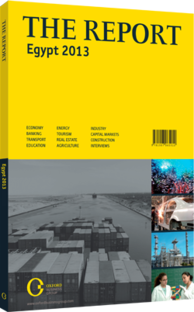Commercial International Bank: Banking
THE COMPANY: Commercial International Bank (CIB) was established in 1975 as a joint venture between the National Bank of Egypt (51%) and Chase Manhattan Bank (49%). It is now the biggest publically traded bank in Egypt. With the sale of National Société Générale Bank, CIB offers the only exposure to a large-cap bank in the Egyptian market, and with the potential de-listing of Orascom Construction Industries, it would be the largest constituent of the EGX 30 Index. As of December 2012, the bank maintains a market share of 8%.
CHANGES IN ECONOMY: The current economic stagnation is the main pullback factor for Egypt’s banking sector. This is due mainly to a slowdown in deposit and lending activities in addition to growing non-performing loans and pressure on service charges and fees. Until now, however, CIB has managed to use its strong, longstanding client relationships to outpace the sector on deposit growth. The bank maintains efficient fund utilisation by allocating 43% of its deposit base to government treasuries, thereby capitalising on high yields. The bank is expected to change this allocation in case of an economic pickup, diverting higher amounts to the private sector. This is possible due to the short tenor of government treasuries, which gives CIB room to achieve organic loan growth. During 2012, deposits expanded 10% versus a sector average of 7%, while loans rose 2.5%, largely in line with the sector average.
In 2012 the bank posted a net profit of LE2.2bn ($313.1m), up 37% year-on-year. The growth in profitability corresponds to a 90-basis-point rise in net interest margins to 4.7%. Interest income from clients rose 20%, reflecting a 2.5% increase in loans, while interest from Treasury bills and bonds jumped 80% as the bank raised its allocation to government treasuries by 33%. Service charges and fees grew 10% to LE926m ($131.77m), reflecting the slowing economic activity. Accordingly, total non-interest income reached LE1.5bn ($213.5m), up from LE1.3bn ($185m) in 2011.
CIB’s Basel II capital adequacy ratio stood at 13.6% in December 2012, well above the Central Bank of Egypt’s minimum of 10%. In terms of asset quality, CIB’s non-performing loans increased to 3.6% from 2.8% as of the end of 2011. The bank maintained its coverage ratio at 120% by almost doubling its provisioning charges to LE609m ($86.66m). CIB’s focus on institutional lending in recent years has helped it keep its asset quality measures at solid levels.
DEVELOPMENT STRATEGY: During the last Euromoney conference, CIB’s chairman announced plans to increase the bank’s retail activity by 25% given that Egypt is a largely under-penetrated market (current banking penetration levels stand at 12%). However, we believe CIB’s objective of improving retail activity is exaggerated given the current economic environment and Egypt’s growing rate of unemployment.
The bank also announced plans to increase its focus on mid-cap lending, a bracket of borrowers that management believes is oftentimes overlooked by banks in Egypt. Furthermore, in its annual presentation, the bank focused on terms such as “relationship management”, “e-banking enhancement” and “improved customer service,” all of which re-emphasise the bank’s focus on expanding its client base. With non-performing loans and past-due loans representing 3.6% and 1.8% of the bank’s loan book, respectively, targeting the aforementioned groups could actually have an adverse effect on the bank’s asset quality and, in turn, put pressure on its bottom line.
Another area into which CIB is looking to expand is mortgage lending. Management has stated that this market remains largely untapped in Egypt. The segment’s growth continues to lag significantly behind that of the real estate market, which is demonstrated by the following facts: first, mortgage loans represent 0.72% of total bank loans to customers; and second, mortgage loans amount to less than 1% of GDP versus an average of 11-14% in other countries in the region. Again, our analysis finds that the challenging economic environment, rising unemployment and inflationary pressures will sabotage dynamic growth in this area.
You have reached the limit of premium articles you can view for free.
Choose from the options below to purchase print or digital editions of our Reports. You can also purchase a website subscription giving you unlimited access to all of our Reports online for 12 months.
If you have already purchased this Report or have a website subscription, please login to continue.

